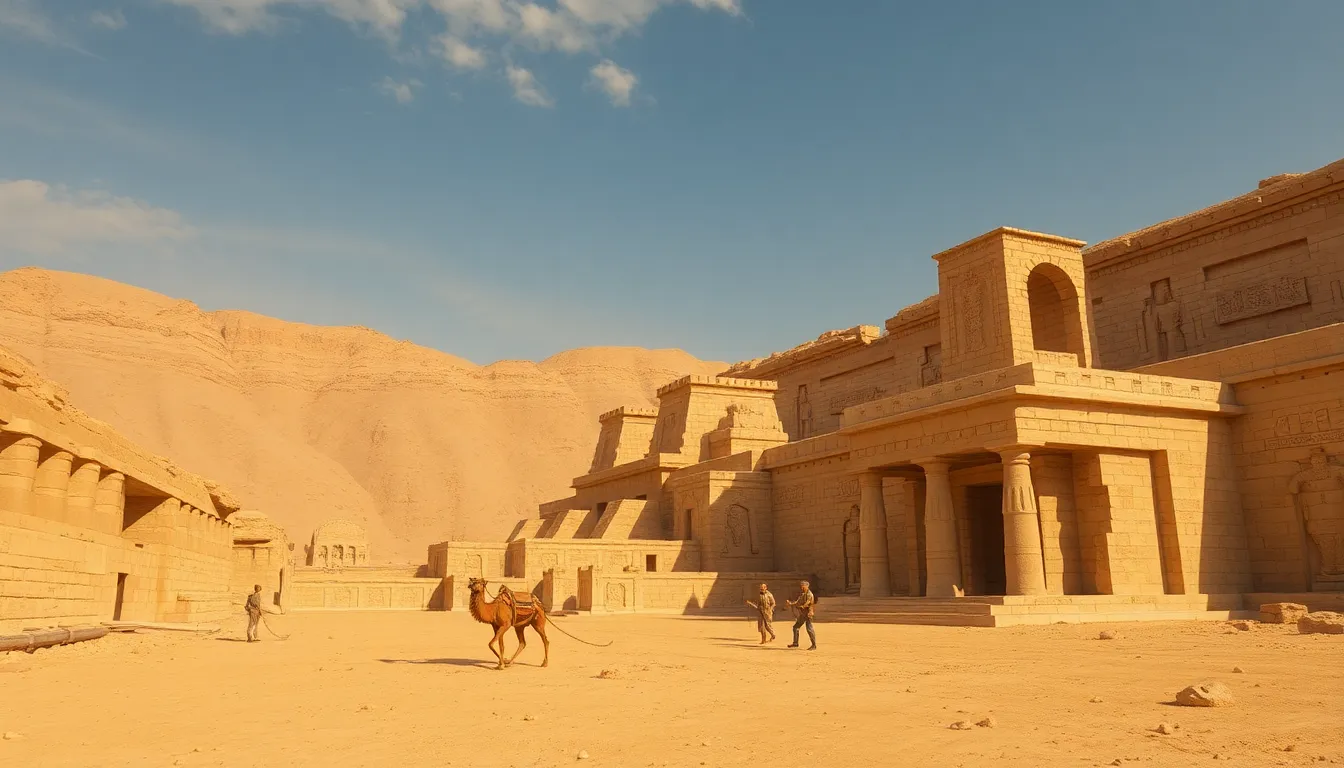The Myths of Pharaoh Hatshepsut’s Trade Expeditions
I. Introduction
Pharaoh Hatshepsut, one of the most successful female rulers of ancient Egypt, reigned during the 18th Dynasty (c. 1479–1458 BCE). Her reign is often noted for its extensive building projects and a significant expansion of trade networks. However, despite her accomplishments, many myths have emerged surrounding her trade expeditions, particularly the famed journey to the land of Punt. This article aims to explore these myths, delving into the historical context, archaeological evidence, and the cultural significance of Hatshepsut’s trading endeavors.
II. Historical Context of Hatshepsut’s Rule
Hatshepsut ascended to the throne in a unique political climate, following the reign of her husband, Thutmose II. Her tenure as pharaoh saw both challenges and opportunities, especially in terms of trade and economy. The 18th Dynasty was marked by a flourishing economy, increased military power, and expanding trade routes. The following points highlight the conditions during her reign:
- Political stability following the tumultuous periods of the preceding dynasties.
- Economic growth fueled by resource-rich territories.
- Increased demand for luxury goods and raw materials from foreign lands.
Trade was a cornerstone of Hatshepsut’s administration, facilitating cultural exchanges and contributing to the wealth of the nation.
III. The Legendary Punt Expedition
One of Hatshepsut’s most renowned trade expeditions was the journey to Punt, a land whose exact location remains a topic of scholarly debate. The expedition aimed to procure valuable resources such as gold, incense, ivory, and exotic animals.
However, the myths surrounding this expedition often overshadow the historical facts. The records from Hatshepsut’s reign depict the following:
- The expedition was successful, bringing back a wealth of goods.
- Hatshepsut portrayed herself as a divine ruler, favored by the gods.
- The journey is celebrated in her mortuary temple at Deir el-Bahari, showcasing the riches acquired.
Culturally and economically, the expedition had profound implications, enhancing Egypt’s influence and wealth. Nonetheless, the embellished narratives have led to misconceptions about the expedition’s scale and impact.
IV. The Role of Art and Architecture in Promoting Trade
Hatshepsut’s mortuary temple serves as a significant artistic testament to her reign and the trade expeditions. The temple features numerous reliefs depicting the journey to Punt, including scenes of the wealth brought back to Egypt.
Art in ancient Egypt was not merely decorative; it served as a medium for propaganda. The representations of trade were intended to:
- Enhance Hatshepsut’s image as a powerful and successful ruler.
- Promote the idea of divine approval of her reign.
- Reinforce the significance of trade in strengthening the economy.
However, these artistic depictions have sometimes been misinterpreted, leading to exaggerated perceptions of the scale and nature of the expeditions.
V. Hatshepsut’s Trade Partners: Who Were They?
During her reign, Hatshepsut established trade partnerships with various regions, including Punt, the Levant, and Nubia. These partnerships were crucial for procuring valuable commodities.
Myths about the wealth of these partners often arise from the luxurious goods acquired through trade. The reality is more nuanced:
- Punt is often romanticized as a land of unimaginable riches.
- Trade with the Levant involved a variety of goods, including cedar wood, which was highly valued in Egypt.
- Nubia provided gold and other resources, contributing to Egypt’s wealth.
These economic relationships significantly impacted Egypt’s prosperity and the development of its trade networks.
VI. The Influence of Gender on Hatshepsut’s Trade Policies
Gender dynamics played a crucial role in Hatshepsut’s rule and her trade policies. As one of the few female pharaohs, she faced unique challenges in a male-dominated society.
Her gender influenced perceptions of her leadership and trade expeditions in several ways:
- Hatshepsut had to assert her authority in a role traditionally held by men.
- Her portrayal as a male pharaoh in art and inscriptions reflects societal expectations.
- Many myths surrounding her expeditions can be traced to biases against female rulers.
Understanding these dynamics is essential for interpreting her legacy and the historical narratives surrounding her reign.
VII. Archaeological Evidence: What Do We Really Know?
Archaeological findings related to Hatshepsut’s trade expeditions provide valuable insights, yet they also present limitations. Excavations in regions associated with her reign have uncovered artifacts and inscriptions that shed light on her trade activities.
The evidence includes:
- Depictions of the Punt expedition in her mortuary temple.
- Artifacts believed to have originated from Punt, including incense and exotic animals.
- Inscriptions detailing trade agreements and goods exchanged.
However, limitations in the evidence and ongoing debates among scholars highlight the complexities of understanding her expeditions. Archaeology continues to reshape our comprehension of Hatshepsut’s trade legacy.
VIII. Conclusion
In summary, the myths surrounding Pharaoh Hatshepsut’s trade expeditions often overshadow the historical realities of her reign. By examining the context, evidence, and cultural significance of her efforts, we gain a clearer understanding of her legacy. Hatshepsut’s reign exemplifies the importance of trade in ancient Egypt and challenges traditional narratives about female leadership.
Understanding the historical accuracy of her story is crucial for appreciating the complexities of her reign and the role of women in history. Hatshepsut remains a powerful symbol of female leadership in a time when such figures were rare.




